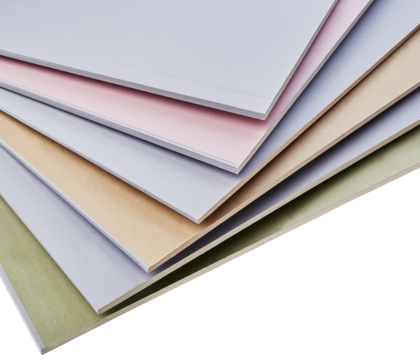plasterboard
The Evolution of Plasterboard
Plasterboard, widely known as drywall or gypsum board, revolutionized the construction industry with its introduction. Its roots trace back to the late 19th century in the United States, where it emerged as a quicker and more convenient alternative to the labor-intensive traditional wet plastering methods. The core of plasterboard is gypsum, a naturally occurring soft sulfate mineral, which is mixed with water and additives, then set between layers of paper or fiberglass and dried in a kiln.
Plasterboard in Contemporary Use
In today’s construction world, plasterboard is an indispensable material, commonly used for forming interior walls and ceilings. Its ease of installation, ability to be cut to fit various spaces, and compatibility with different finishes like paint or wallpaper make it a preferred choice in both residential and commercial construction. The finishing process usually involves taping and mudding the joints for a smooth surface, which is then sanded before applying any final decorations.
Types of Plasterboard and Their Purposes
- Standard Plasterboard: The most common type, used for general applications in dry areas. It's ideal for walls and ceilings where moisture is not a concern.
- Fire-Resistant Plasterboard: Contains fibreglass and other additives that increase its fire-resistant properties. It's used in areas that require enhanced fire protection, such as between a garage and living space.
- Moisture-Resistant Plasterboard: Also known as green board due to its color, this plasterboard is suitable for areas with high humidity or occasional wetting, such as bathrooms and kitchens. It's treated to resist moisture and mold.
- Acoustic Plasterboard: Designed to reduce noise transmission. It’s denser than standard plasterboard and is used in walls and ceilings where sound insulation is important, such as in apartments or offices.
- Impact-Resistant Plasterboard: This type has a higher density and is reinforced to withstand knocks and bumps. It's suitable for high-traffic areas like schools and hospitals.
- Foil Backed Plasterboard: Comes with a layer of foil on one side, which acts as a vapor barrier and helps improve insulation. It's used in external walls and ceilings.
- Eco-Friendly Plasterboard: Manufactured using recycled materials and less energy. It's an option for those seeking sustainable building materials.
Conclusion
From its inception to the present day, plasterboard has continued to evolve, adapting to the needs of modern construction. Its different types ensure that there is a suitable option for various applications, whether it’s for moisture resistance, fire safety, sound insulation, or environmental considerations. This versatility, combined with ease of installation and finishing, cements plasterboard’s status as a fundamental material in the construction industry.


Plastering FX Ltd
The best place to find plastering services & information.
Plastering Fx are a well established and experienced Plastering Company based in Romford Essex area. Our work includes major projects such as apartments, housing projects, public building developments as well as smaller prestige properties and individual commissions.
We offer a full range of quality plastering and rendering services for the interior and exterior of your property at affordable prices.
We pride ourselves on delivering a very high standard of workmanship. With many years experience we have achieved a reputation for high quality work and ensure an excellent service. We understand working in partnership with our clients is extremely important and ensure exceptional communication at all levels.

